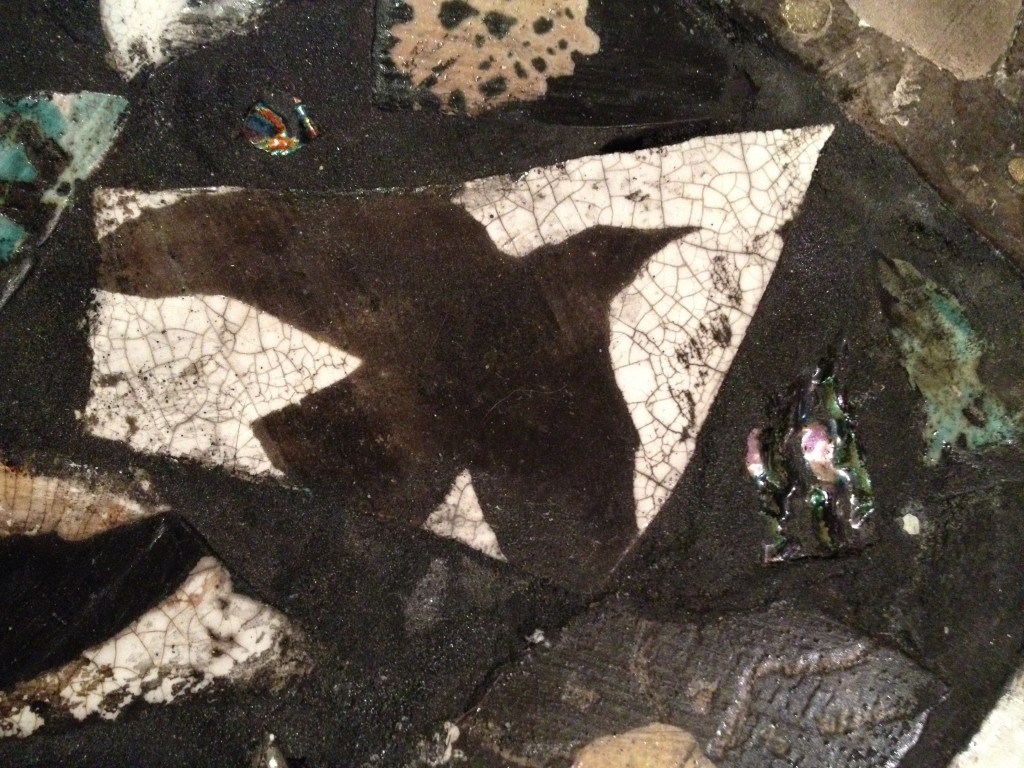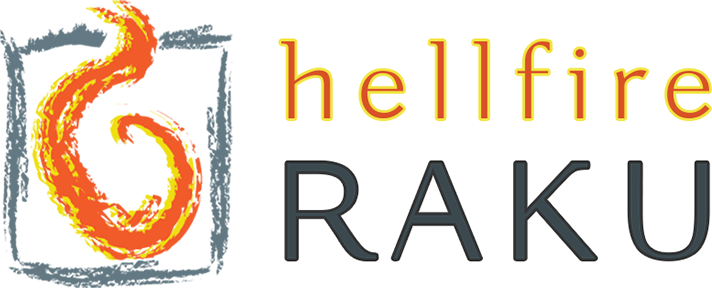The firing has several steps, and the result is a beautiful, organic, raku fired ceramic piece with a unique surface treatment. A properly dried tile is bisque fired as normal. Then, parts or all of the tile are covered with a slip and then with a specially prepared glaze. After the slip application has dried then the glaze is applied. I draw designs with a needle tool or scrape away portions of the slip/glaze combination.

Naked Raku is another process that I use. In 2010 I had the opportunity to study with a master ceramicist and naked raku aficionado Robert Piepenburg of Piepenburg Studios. The workshop was held at Seattle Pottery Supply.
The pieces are then low fired in the raku kiln, and at just over 1400 degrees F, the piece is lifted from the kiln with long metal tongs and placed in a metal trash can, on top of the combustibles. I like to use a combination of dried seaweed, pine needles, sawdust and newspaper. The heat of the piece sets the dry combustibles afire. The lid is secured tightly. After several minutes the piece is removed from the trashcan and washed off. During the washing and scrubbing the glaze flakes off leaving the etched image which has now turned black from the smoking process, visible on the surface. Thus the name ‘naked raku’ as the piece loses its glaze at the end of the firing. It is said to be a “sacrificial” glaze.


joslyn werner
Bonnie, you’re having way too much fun! Love these vessels, and tiles.
I’m taking ceramics and will be raku firing in a few weeks.
Happy spring!
bonnie
Thanks Joslyn,
I think you might find raku a fun adventure.